#dölma
Text

Oṃ Tāre Tuttāre Ture Svāhā
191 notes
·
View notes
Photo


"Om Tare Tuttare Ture Svaha"
Green Tara ॐ
Talon Abraxas
Tara, whose name means “star” or “she who ferries across,” is a Bodhisattva of compassion. In Tibetan, Tara is known as “Dölma” (Sgrol-ma), or “She Who Saves.” In particular she represents compassion in action, since she’s in the process of stepping from her lotus throne in order to help sentient beings.Samundra Man Singh Shrestha, Nepal
176 notes
·
View notes
Text
TARA - BUDDHISM



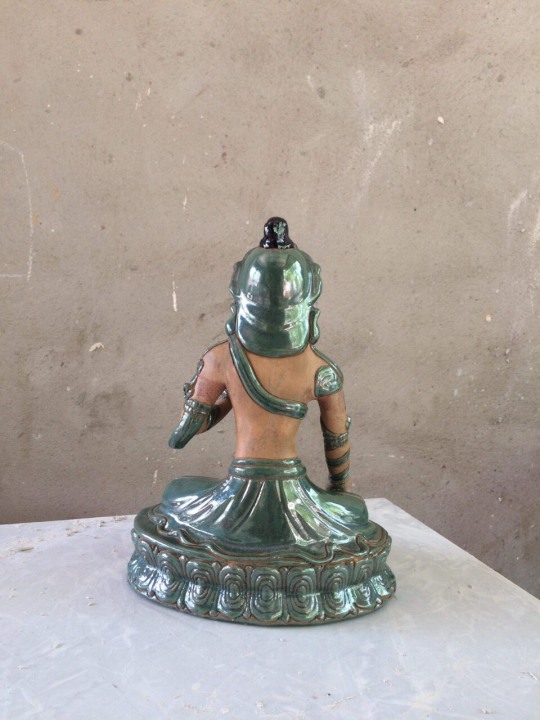

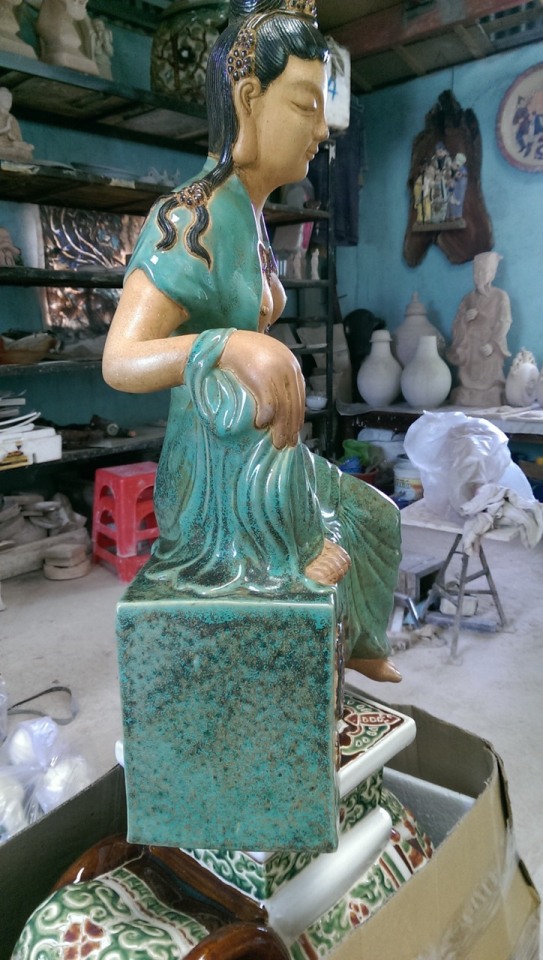
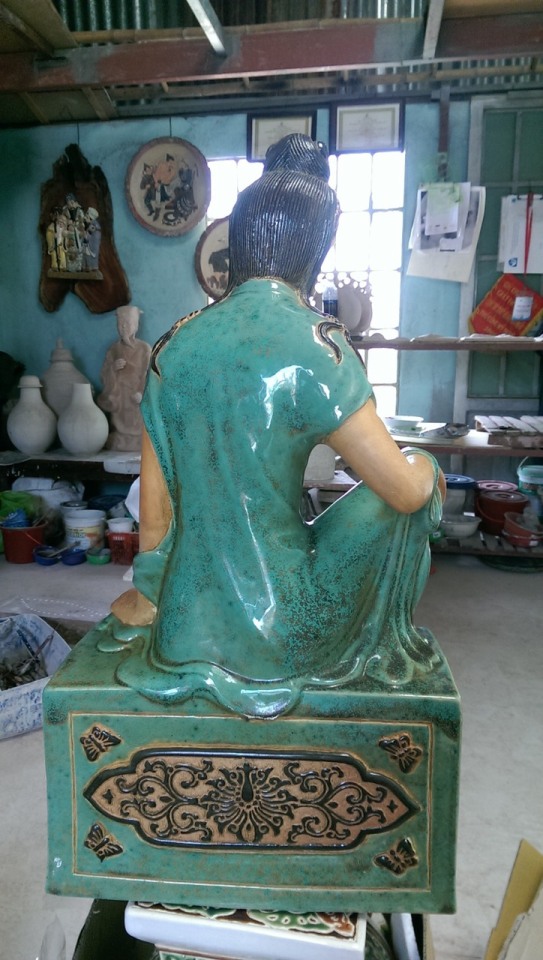
Tara (Sanskrit: तारा, tārā; Tib. སྒྲོལ་མ, Dölma), Ārya Tārā, or Shayama Tara, also known as Jetsun Dölma (Tibetan language: rje btsun sgrol ma) is an important figure in Buddhism, especially revered in Tibetan Buddhism.
Source: wiki
Handcrafted Vietnamese Pottery
4 notes
·
View notes
Photo

Artist: A paubha of White Tara, the Mother of all Buddhas, by Prem Man Chitrakar “Tara or Jetsun Dölma in Tibetan is known as the mother of liberation, an important figure in Buddhism. She appears as a boddhisatva or as a Buddha in various traditions of Buddhism. Tara is also mostly associated with success and achievements. She is also a meditation deity and is known for her 21 manifestations, each of which has a different color, and one of which is the Black Tara.Black Tara administers tests for the soul, determining our evolvement and our spiritual enlightenment. She rules over spirits, exorcisms, and healing of both the body and the mind.” Praises to the Twenty-One Taras https://fpmt.org/wp.../uploads/prayers/21tarasltrrdr.pdf https://www.instagram.com/p/CfOqXIStbfF/?igshid=NGJjMDIxMWI=
4 notes
·
View notes
Text
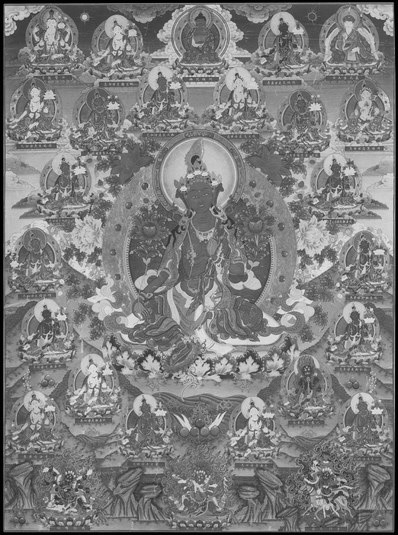

Jetsün Dölma라고도 알려진 Tara Ārya Tārā(고귀한 타라)는 불교의 중요한 인물로, 특히 금강승 불교와 대승 불교에서 존경을 받습니다. Tara Ārya Tārā (Noble Tara), also known as Jetsün Dölma is an important figure in Buddhism, especially revered in Vajrayana Buddhism and Mahayana Buddhism
0 notes
Text
卓玛 (dolma) - english translation
youtube
Originally written and performed by Nima Zeren·Yadong (尼玛泽仁·亚东) for his 2007 album 故乡·卓玛 (homeland · dolma).
"Dolma" is a Tibetan female name, derived from the Tibetan word for the Buddhist figure Tara (སྒྲོལ་མ, dölma), who is classified as a deity, bodhisattva, or Buddha depending on the sect. She is especially prominent in Tibetan Buddhism, specifically.
Embedded above is Yadong's performance. Below the cut and under the lyrics, I've embedded two covers that I like by Guo Tao (郭涛) and Jamyang Dolma (འཇམ་དབྱངས་སྒྲོལ་མ).
草原的风,草原的雨,草原的羊群
草原的花,草原的水,草原的姑娘
啊…卓玛,啊…卓玛
草原上的姑娘卓玛啦
你有一个花的名字,美丽姑娘卓玛啦
你有一个花的笑容,美丽姑娘卓玛啦
你像一只自由的小鸟,歌唱在那草原上
你像春天飞舞的彩蝶,闪烁在那花丛中
啊…卓玛
草原上的格桑花
你把歌声献给雪山,养育你的雪山
你把美丽献给草原,养育你的草原
啊…卓玛 啊…卓玛
草原上的姑娘卓玛啦
你有一个花的名字,美丽姑娘卓玛啦
你有一个花的笑容,美丽姑娘卓玛啦
你像一杯甘甜的美酒,醉了太阳 醉了月亮
你像一支悠扬的牧歌,美了雪山 美了草原
啊…卓玛
草原上的格桑花
你把歌声献给雪山,养育你的雪山
你把美丽献给草原,养育你的草原
你把歌声献给雪山,养育你的雪山
你把美丽献给草原,养育你的草原
啊…卓玛 啊…卓玛
草原上的姑娘卓玛啦
啊…卓玛
草原上的姑娘卓玛啦
The grassland's wind, the grassland's rain, the grassland's sheep flocks
The grassland's flowers, the grassland's waters, the grassland's daughter
Ahh… Dolma, ahh… Dolma
Daughter of the grassland, Dolma
You have the name of a flower, beautiful girl Dolma
You have the smile of a flower, oh beautiful girl Dolma
You're like a free little bird, singing across the grasslands
You're like a dancing spring butterfly, flickering among the flowers
Ahh… Dolma
Galsang flower of the grassland
You offer your song to the snowy mountains, the snowy mountains that raised you
You offer your beauty to the grasslands, the grasslands that raised you
Ahh… Dolma, ahh… Dolma
Daughter of the grassland, Dolma
You have the name of a flower, beautiful girl Dolma
You have the smile of a flower, oh beautiful girl Dolma
You're like a cup of fine sweet wine, the sun and moon are drunk on you
You're like a melodious shepherd's song, bringing beauty to the mountains and grasslands
Ahh… Dolma
Galsang flower of the grassland
You offer your song to the snowy mountains, the snowy mountains that raised you
You offer your beauty to the grasslands, the grasslands that raised you
You offer your song to the snowy mountains, the snowy mountains that raised you
You offer your beauty to the grasslands, the grasslands that raised you
Ahh… Dolma, ahh… Dolma
Daughter of the grassland, Dolma
Ahh… Dolma
Daughter of the grassland, Dolma
youtube
youtube
t/n:
Galsang flowers make another appearance! Now that I've learned their significance, I recognize them frequently in Tibetan folk songs. Here's the translation note copy/pasted from 姑娘我爱你/girl, i love you:
Galsang flowers refer to a variety of wildflowers found on the Tibetan plateau, including but not limited to Cosmos bipinnatus (cosmos), Callistephus chinensis (asters), and Potentilla fruticosa (cinquefoils). “Galsang” is Tibetan for “good times/happiness”. They are beautiful but resilient, so they’ve come to symbolize strong women. They’re the city flower of Lhasa.
This song uses 姑娘 throughout, which I translated into English separately as both "daughter" and "girl".
This blog is basically, unofficially, a Jamyang Dolma fanpage, so I'm tagging her cover album that this song appears in, 金色的呼唤 (golden calling), so that they can be collected when I translate more songs from the album.
1 note
·
View note
Text
Worldly Ways Chapter 3 part 6
the King of Gods, as well as the God of sky and thunder in Ancient Greek culture; and Hercules is the son of Zeus who had lived among humans in Ancient Greece; Loki, is an mischievous God from Norse mythology; Krishna, who is an major God in Hinduism; Imentet, who is the Ancient Egyptian Goddess who is the Goddess of the Dead who lives in an tree that overlooks the entrance of the Duat, the Ancient Egyptian Underworld; Isis, who is an major Goddess in Ancient Egyptian religion; Ra, also known as Re, is the Ancient Egyptian Sun God; Vishnu, who is another major God in Hinduism; The Buddha; Avalokiteśvara, also known as Padmapani is an compassionate Bodhisattva in Buddhism who is an woman in some cultures and an man in others, like in Tibet for example; an Bodhisattva is an someone who is on their way to becoming an Buddha; and an Buddha is an someone that is Enlightened or Awakened to the true nature of the universe, and someone who has reached Nirvana, which obviously has nothing to do with the Grunge band, who Elizabeth had met incidentally at an wild party she had attended one evening in the early nineties; Nirvana is the spiritual goal for Buddhists, and Nirvana can translate to “Blowing Out,” or “Quenching,” or “Liberation,” or “Extinguishing”; in Buddhism, Nirvana extinguishes the “three fires,” or “three poisons” which are greed, aversion, ignorance, and once the three fires are extinguished the cycle of rebirth, also known as Saṃsāra, can finally come to an end; Saṃsāra is the endless cycle of rebirth, an mundane life, and then dying again; and Saṃsāra is thought of as being Duḥkha which can translate to “suffering,” or “unhappiness,” or “pain,” or “unsatisfactoriness,” or “stress”; Ārya Tārā, also known as Tara Buddha, Shayama Tara, or Jetsun Dölma, is an major Goddess, Bodhisattva, and Buddha in Buddhism, particularly in Tibetan Buddhism, and is known as the Mother of Liberation; the prophet Nichiren Daishōnin, an Buddhist prophet from Medieval Japan who Nichiren Buddhism is named after; the prophet Muhammad, who had started Islam in the Medieval Middle East; Jesus Christ, and the virgin Mary; Elizabeth Stone, who is a very powerful sorceress, is not only an incredibly skilled magician, she finds it fascinating; magic is very interesting, and therefore religion is also very interesting to her since religion is all about magic
0 notes
Text
Chapter 14: teenagers
Jamyang found her in the hall dedicated to the twenty-one dölmas, studying them and writing something down.
“Hey,” she greeted. “I’ve been looking for you.”
Grey-blue eyes looked up from her notes, a grin flashed her way, and Jamyang found herself engulfed in a hug.
---
Teenagers and master ceremonies
#a love in the eye of the hurricane#atla fanfic#oc centric#atla oc#atla oc fanfic#airbenders & airbending#airbender kids being kids#Jamyang has a panda#Gawa gave her one as a birthday present#delirious Gawa#and Jamyang taking care of her#Jamyang agonised over her tattoo for months#fic update#pre yangchen era
0 notes
Photo

Artista: Gabriela Richardson
Álbum: Dölma
Ano: 2019
Faixas/Tempo: 06/13min
Estilo: Pop
Data de Execução: 13/09/2021
Nota: 6,0
Melhor Música: Soft Beat
1 note
·
View note
Text
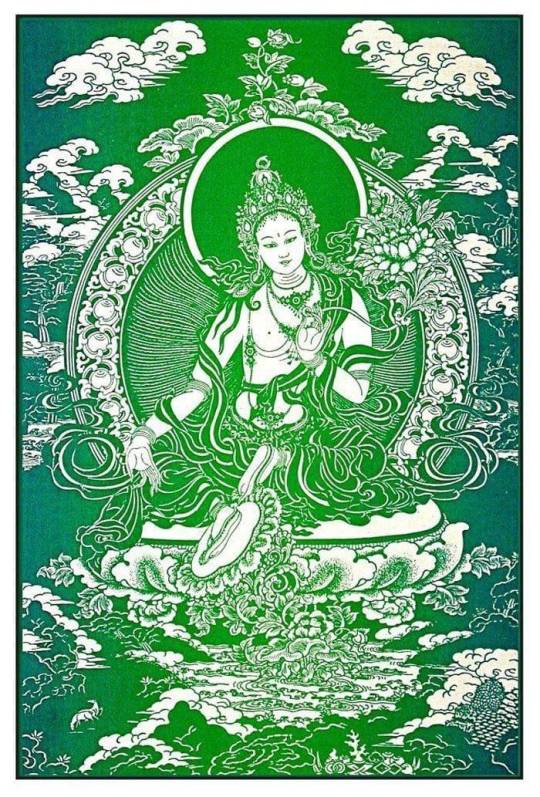
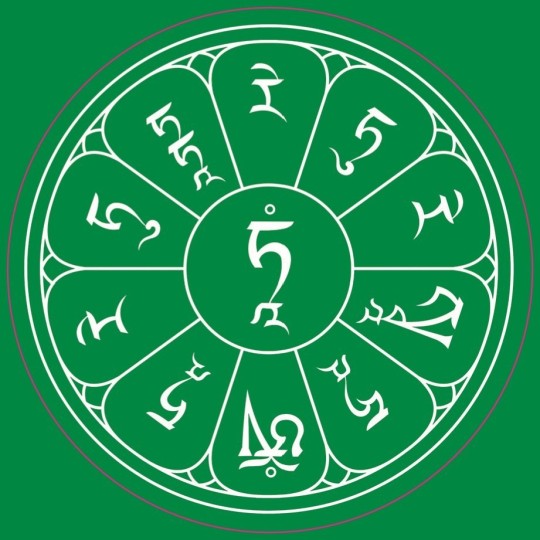
Om Tare Tuttare Ture Svaha
Tara, whose name means “star” or “she who ferries across,” is a Bodhisattva of compassion. In Tibetan, Tara is known as “Dölma” (Sgrol-ma), or “She Who Saves.”
In particular she represents compassion in action, since she’s in the process of stepping from her lotus throne in order to help sentient beings.
11 notes
·
View notes
Text
Green Tara mantra: Oṃ Tāre Tuttāre Ture Svāhā
(Om Tare Tuttare Ture Svaha)
Tara, whose name means “star” or “she who ferries across,” is a Bodhisattva of compassion. In Tibetan, Tara is known as “Dölma” (Sgrol-ma), or “She Who Saves.” In particular she represents compassion in action, since she’s in the process of stepping from her lotus throne in order to help sentient beings.
Literal translation
This mantra (or at least most of it) has a literal meaning. Here are the meanings of the various parts of it:
The syllable Om has no conceptual meaning, and is a sound representing the potential for awakening that resides in all living beings.
“Tare” is the vocative form of Tara, so it means “O Tara!” (The vocative form of a noun is where the person or thing is being addressed or called upon.)
“Tu” is an exclamation that can mean “Pray! I beg! I entreat!” and so “tuttare” means something like “I pray to you, O Tara,” “I entreat you, O Tara,” or “I beg you, O Tara.”
“Tura” is an adjective meaning “quick, willing, prompt.” As a noun, “tura would mean “swift one.” “Ture” would be the vocative form of the noun, and so “ture” would mean something like “O swift one!”
Svāhā means: “Hail!”, “Hail to!” or “May a blessing rest on!”
So the Green Tara mantra could be translated as “OM! O Tara! I entreat you, O Tara! O swift one! Hail!”
#buddha#buddhism#buddhist#dharma#sangha#mahayana#zen#milarepa#tibetan buddhism#thich nhat hanh#tara#green tara#white tara#mindfulness#eight precious symbols#enlightenedconsciousness#equanimity#enlightenment spiritualawakening reincarnation tibetan siddhi yoga naga buddha#karma#dakini#deities#dhammapada#dhamma#mantra
4 notes
·
View notes
Text
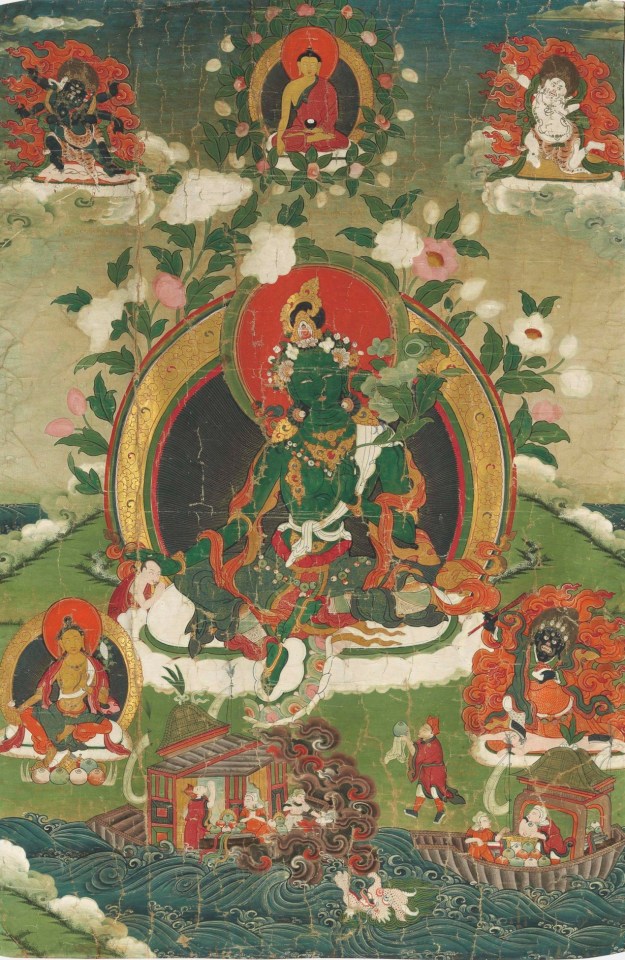
21 notes
·
View notes
Photo

"Om Tare Tuttare Ture Svaha"
Green Tara by Talon Abraxas
Tara, whose name means “star” or “she who ferries across,” is a Bodhisattva of compassion. In Tibetan, Tara is known as “Dölma” (Sgrol-ma), or “She Who Saves.” In particular she represents compassion in action, since she’s in the process of stepping from her lotus throne in order to help sentient beings.
335 notes
·
View notes
Photo

“Tara or Jetsun Dölma in Tibetan is known as the mother of liberation, an important figure in Buddhism. She appears as a boddhisatva or as a Buddha in various traditions of Buddhism. Tara is also mostly associated with success and achievements. She is also a meditation deity and is known for her 21 manifestations, each of which has a different color, and one of which is the Black Tara.
Black Tara administers tests for the soul, determining our evolvement and our spiritual enlightenment. She rules over spirits, exorcisms, and healing of both the body and the mind.”
28 notes
·
View notes
Text
TAG GAME
❤️ thanks for tagging me @twiceroyaldove !!
I don't think I have anyone else to tag for this aaaa 😱
Last Song:
Hatari! Been looping this band for the past week (especially this track LOL)

Last Movie:
I rewatched Spiderman: Into the Spiderverse again recently!
Currently Reading:
Making my way through Emporer Mage (and the rest of Daine's series)!! I need to finish before my library loan is out 💦
Currently Watching:
I'm partway through a slowmoving Wakfu marathon - season 2 atm.
Currently Craving:
Dölma,,, always dölma,,,
Working on Anything Right Now?:
🏃 So MUCH, but today's projects are art challenge prep (october is SO CLOSE) + color work for a friend!
Currently Playing:
HM! I think the last game I played was Factorio, although I hardly would call it an in process playthrough :"3c
#tag game#fortnite dances my way through everyone's feed#anyways loop hatari they're an icelandic rock band and SO good =w=
3 notes
·
View notes
Photo

Now of all times it is of vital importance that we keep our minds on Tara's -- or Jetsun Dölma's -- teachings. The Mother of All Buddhas, whether we invoke her or not, offers limitless compassion, merit, prosperity, and assistance to those in need. This comes from her eon's of dedication to her pursuit of bodhicitta, or the being that seeks liberation for the benefit of all sentient beings, along the way accruing ceaseless merit. In her countless lives of enlightenment, seeing the impermanence of the divisions between our individual sufferings, she compassionately devoted her existence to bringing all others to that same consciousness, and to that end providing as much aid in this life and in all future lives as possible. To quote Lama Zopa Rinpoche, "[f]rom Tara's heart, from the mind unbearable compassion flows from the heart for us the sentient beings" (1981). Despite my particular devotion to her compassionate savoriess Green form, as of late I have shifted my practice focus from Green to White Tara, whose emanation eliminates sickness and prolongs life. Every day is a gift, a gift which we can and must use to benefit those that are suffering. Every moment more in our lives we can use to enlighten ourselves and others, to bring relief from pain or misery in this life, or to sow the seeds of positive karma for our next lives. White Tara lends us her hand in this regard. Tara saves us from dangers, but White Tara in particular intervenes in cases where our negative karma is ripening into finite mortality. When lives are ending "early", we pray to White Tara for her help in offering us an extension in order for us to continue dedicating our lives to the benefit of others' suffering. My friends, I ask only that, in these times, you remember that there are fewer things to divide than unify us. We share innumerable experiences, lives, moments; to connect, to love, to share joy and pain. Our hearts are as one, yet our actions set forth attachments as impermanent walls between what we might've seen as "us". Let White Tara stitch that incision and extend our lives as we recite her mantra. ཨོཾ་ཏཱ་རེ་ཏུ་ཏྟཱ་རེ་ཏུ་རེ་མ་མ་ཨཱ་ཡུརྤུཎྱེ་ཛྙཱ་ན་པུ་ཥ་ཊཾི་ཀུ་རུ་ཡེ་སྭཱ་ཧཱ། https://www.instagram.com/p/B_eEdfJnbeG7XDDErcp63CRcw1q0M17sDvluac0/?igshid=896s19uf9kgi
2 notes
·
View notes